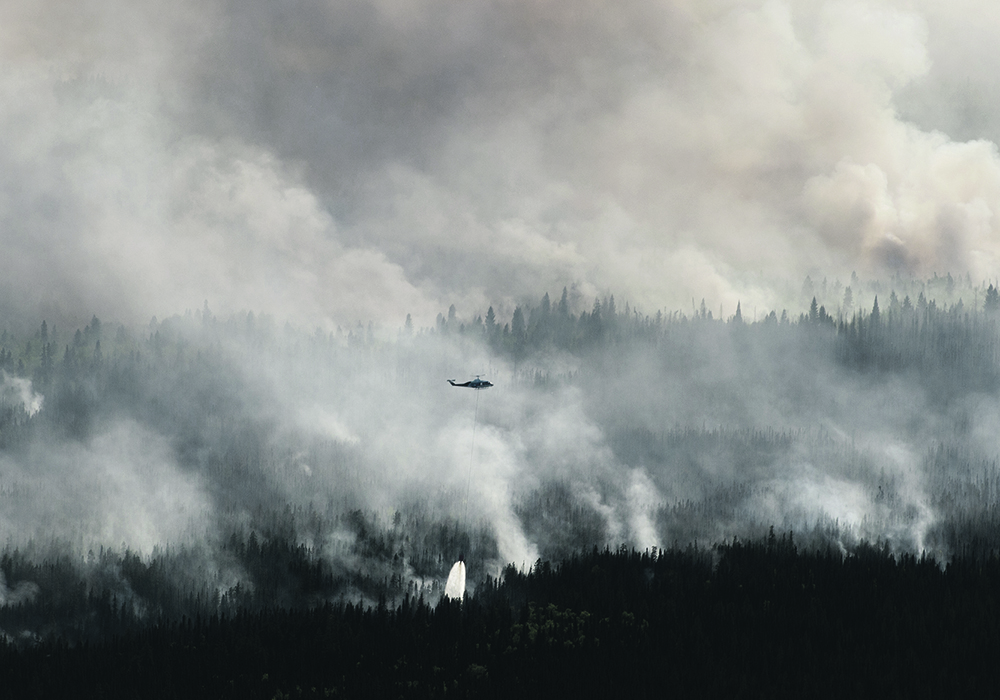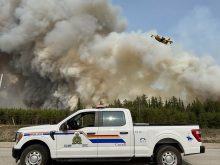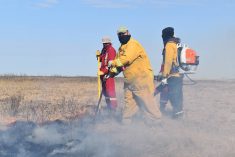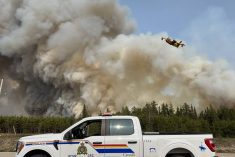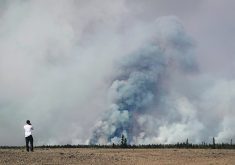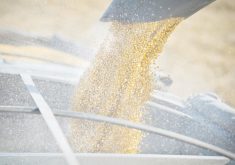Agronomists say there’s little production hit for the wide areas where smoke plumes pass over, but risks do exist
The last two years have had the worst wildfire seasons ever recorded in Canada.
While yield impact was minimal and agronomists say smoke may even have benefits for crops in some cases, a future with more destructive wildfire seasons could have negative long-term effects, experts warn.
Grain Farmers of Ontario senior agronomist Marty Vermey noted that, for the wide areas where smoke plumes pass over, there’s little production hit.
Read Also

Volatile temperatures expected for this winter
DTN is forecasting a lot of temperature variability in the Canadian Prairies this winter. Precipitation should be close to average.
“Plants love carbon dioxide, so no doubt carbon dioxide in the atmosphere is going to help plant growth,” he said.
Likewise, Ontario Federation of Agriculture agronomist Jennifer Doelman said forest fires don’t bring the complications associated with industrial or urban blazes.
“If you were to have … a tire fire, and it was letting a bunch of dioxins go into the air, that’s going poison the soil, right? But we’re talking … forest fires. There’s not a lot of other contaminants besides the usual carbon burning.”
However, smoke also blocks valuable sunlight. That could pose a threat to crops on the Prairies, normally known for fewer overcast days, said Agriculture Canada researcher Raju Soolanayakanahally.
Those crops experienced that impact in 2023. Smoke on the Prairies started in early May and lasted on and off until the end of June, likely delaying canola plant progress to flowering.
He also said smoke can limit moisture in the air, leading to a greater vapour pressure deficit and potentially creating an atmospheric drought situation for crops.
Certain compounds in the smoke can also break down chlorophyll molecules, reducing photosynthesis.
“If (there) is no rainfall, then it’s hard to distinguish what is due to smoke, what is due to (no) rain,” he said.
Even in situations where yield has not been affected, producers should consider product quality.
“Overall, we didn’t see the big impact on the yields, but we here in Canada, we are not monitoring the crop quality (when it comes to smoke),” Soolanayakanahally said.
He noted that wine industries in Australia and California “took beatings” during respective wildfire seasons in 2017 and 2020 as grapes absorbed molecules from the smoke. A farm’s proximity to smoke is important when considering the impact.
“The soil health impact from smoke that is happening far away … is very minimal,” he said. “Let’s imagine smoke is happening 600 kilometres from Saskatoon northwards … it is not going to influence too much.”


